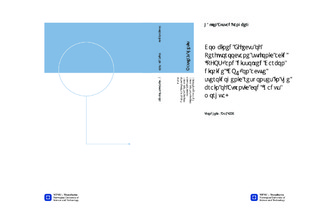| dc.description.abstract | Climate changes are often regarded as a concern for the future, but effects are already seen. Increased levels of atmospheric CO2 have resulted in increased levels of dissolved CO2 and a decreased pH in the ocean surface. An altered environment may change the uptake, distribution and effects of a toxicant, but until now few studies have addressed the interactions of climate changes and environmental pollutants. In the present study, juvenile Atlantic cod (Gadus morhua) were exposed to either of 3 concentrations of the persistent perfluorinated organic pollutant perfluorooctane sulfonate (PFOS; 0, 100 or 200 microgram/L) for one hour a day, for five days. Subsequent to PFOS exposure they were exposed to either of 3 CO2 regimes: gas with normal, moderate or high (an increase of 0, 0.3, or 0.9 % respectively) CO2 saturation was added through air stones. Fish were sacrificed and tissue was sampled 3, 6 or 9 days after initiated CO2 exposure. Effects on the expression of genes involved in steroidogenesis, steroid metabolism and estrogenic responses were investigated in the brain. Fatty acid composition in the brain was also measured. All results were compared to previous analyzed muscle tissue levels of the sex steroids; 17β-estradiol (E2), testosterone (T) and 11-ketotestosterone (11-KT), provided by Preus-Olsen (2013), which reported an increasing effect on all three hormones in response to increased levels of CO2. In the present study, both exposure to PFOS and CO2 disturbed gene expression. The effect of PFOS varied with time and concentration of exposure. Elevated levels of CO2 saturation caused an increased expression of StAR and ERα in a concentration-dependent manner, which may indicate an increased production of steroids and elevated E2 levels in the brain. Exposure to PFOS and CO2 in combination caused different effects than exposure to either alone, which indicates interactions between CO2 and PFOS. Sampling day was the one factor influencing the fatty acid composition the most. Individuals from day 3 had the highest concentrations, while fish sampled at day 9 had the lowest. No clear effects on fatty acids was observed as a result of PFOS exposure, and only a few fatty acids seemed to be distinctly influenced by elevated levels of dissolved CO2. The present results suggest that interactions of effects from climate changes and environmental pollutants may cause different effects than exposure to environmental pollutants alone. To our knowledge, this project is the first to report endocrine disrupting effects of increased dissolved CO2. Based on the present results, potential endocrine disrupting effects of elevated CO2 and PFOS in other aquatic organisms should be investigated. Knowledge about effects and toxicological interactions of climate changes and environmental pollutants in different organisms is essential for future risk assessments. | nb_NO |

